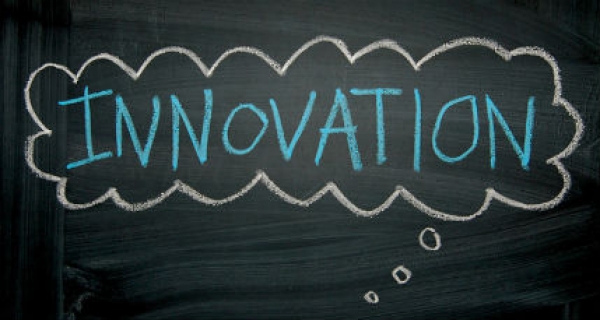In today’s innovation economy, education becomes even more important for developing the next generation of innovators and creative thinkers.
However, there is a significant gap between the potential of modern education and what many students are actually learning. The adoption and exploration of innovative ideas in education is often slow. Instead, many educators still cling to old and increasingly ineffective methods of teaching.
But as the great poet William Butler Yeats once said:
"Education should not be the filling of a pail, but the lighting of a fire."
Using innovative teaching methods to better serve students and to teach them about the benefits of innovative thinking, does so much more than just “fill the pail.” It ignites a passion for learning and provides students with the tools they need to succeed in the innovation economy.
Let's look at some of the ways that innovation can improve education.
Benefits of Technology in the Classroom
There's quite a bit of evidence that technology, when used in the right way, helps students learn. One study, for example, showed that a medical school class with iPads scored 23% higher on exams than classes without this device.
Technology, such as tablets, isn't only useful for absorbing knowledge; it helps with communication as well. Teachers and administrators use such devices to send materials and information to students and parents. Students hand in homework and term papers online and can access educational applications and programs to further assist with learning.
Here are some of the clear benefits of using technology in the classroom:
- It makes learning interesting and engaging, especially for younger generations raised on the latest technology.
- It allows for faster and more efficient delivery of lessons, both in the classroom and at home.
- It reduces the need for textbooks and other printed material, lowering long-term costs incurred by schools and students.
- It makes collaboration easier. Students, teachers, and parents can communicate and collaborate more effectively.
- It helps to build technology-based skills, allowing students to learn, early on, to embrace and take advantage of the tools technology offers.
Finding Innovative Applications of Technology
While technology, in and of itself, does not always spur innovation in the classroom, there are countless innovative ways to use technology to better teach and engage students. Here are some examples:
- Robots in the Classroom – South Korean schools have experimented with robot teachers. This makes lessons more interesting and entertaining for kids and enables teachers from anywhere in the world to be “present” in the classroom.
- Mobile Technology – Smartphones and other mobile devices are increasingly used in education. Mobile apps let teachers conduct digital polls, enhance verbal and presentation skills, and incorporate technological skills with core competency lessons.
- 3D Learning – Kids enjoy 3D games and movies, so why not use this technology to help them learn? GEMS Modern Academy in Dubai does just this, providing students with a 3D lab that offers interactive multimedia presentations.
- Assisting Special Needs Students – Assistive technology is especially useful for students with learning disabilities. For example, phonetic spelling software helps dyslexic students and others with reading problems to convert words to the correct spelling.
Innovations in Teaching Methods
When we think of innovation nowadays, we usually think of technology. However, in a field such as education, it's just as important to focus on innovations in areas such as child psychology, learning theories, and teaching methods. This is particularly true at a time when many educators believe that the U.S. education system is failing. There are quite a few areas where innovations in education will help improve the system for everyone.
Focus on STEM – It's important for educators to prepare students for the future by empowering them with the foundational skills they need to succeed later in life. This includes focusing on STEM (science, technology, engineering, and math), where the United States is currently ranked 31st in the world.
Addressing the Needs of Individual Students – Another longstanding problem in education is the one-size-fits-all approach. It’s well known that everyone has different styles of learning. Some students are visual learners, while others are verbal or auditory learners. Technology allows teachers to individualize lesson plans to different students and their unique styles of learning.
Practical Education and Soft Skills – One criticism of education is that it's impractical and doesn't prepare students for living in the real world. When it comes to actually teaching students how to become innovative thinkers, they need to learn leadership skills, to be encouraged to think creatively, and to be taught independent thinking and learning. Innovative classrooms are beginning to place more emphasis on the soft skills needed to thrive in today’s world.
Analytics in Education
Big data and analytics now dominate the world of business, but analytics can also have a major impact on education. Data can help educators better understand their students' needs and more easily identify areas for improvement. Just as businesses use analytics to assess the results of marketing campaigns or to obtain information about their audience, educators can use data to determine the effectiveness of teaching methods and get a more granular view of who their students are and what they need to be successful. Data helps to take the guesswork out of educational innovation. Learning analytics can also help schools measure the effectiveness and performance of teachers.
The Future of Education
Technology and other changes in society demand innovation in education. While many schools face challenges such as underfunding, unengaged students, and outdated curriculums, innovation offers a path forward.
Innovation isn’t just important for businesses. In many ways, education stands to benefit the most from both utilizing and teaching innovation in the classroom. By exploring new and better ways to educate students and also teaching the skills students need to become innovators themselves, today’s educators can have a tremendous impact on the future of our world.







